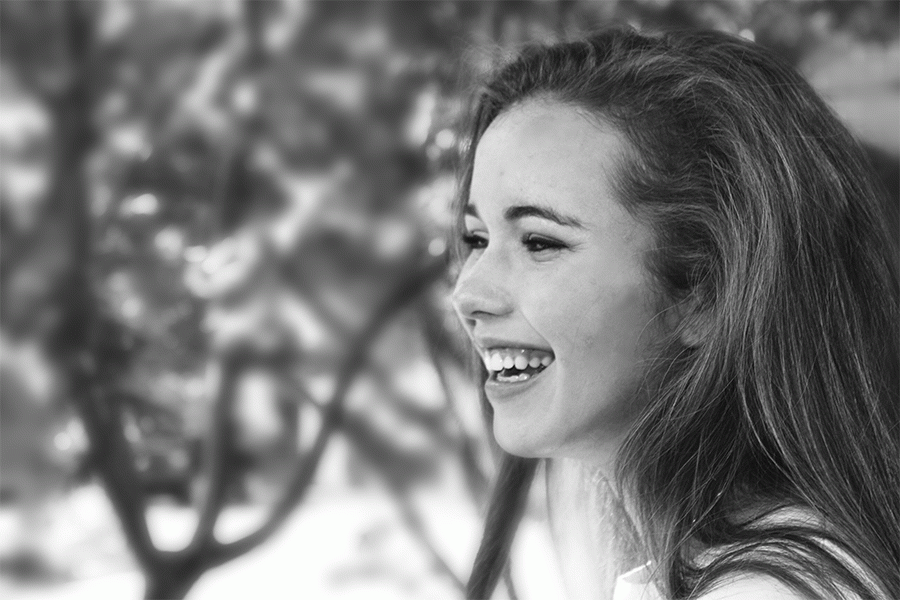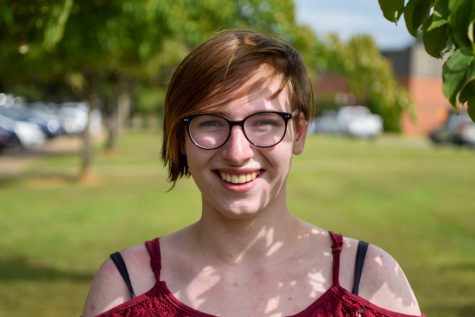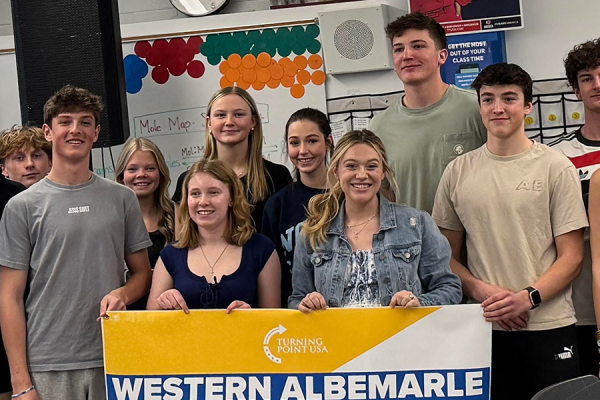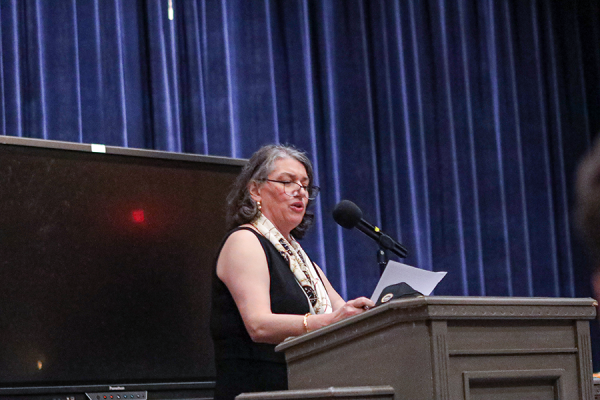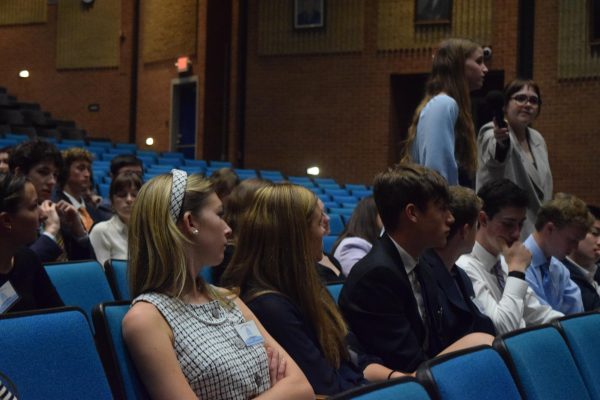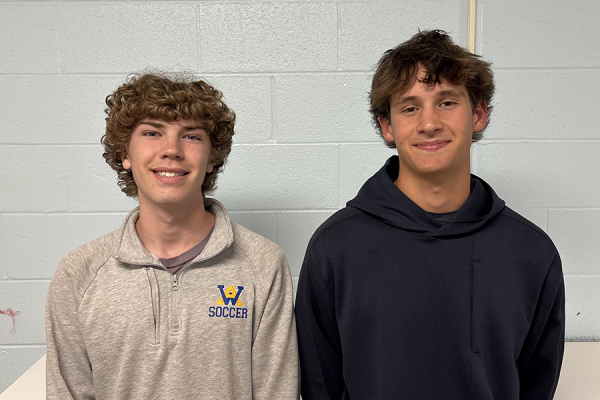Cool Girl of the Month: Meg Richey
March 2, 2017
In this new interview series, the Western Hemisphere is taking a look at some of the talented and driven women of WAHS. This time, we talked to junior Meg Richey, runner-up in the national Search for Hidden Figures contest. Read on as Meg discusses not only her scholarship win, but the woes and wonders of being a girl in STEM, her passion for swing dancing, and the ultimate comfort foods.
WH: Could you tell us a little more about the contest?
MR: There were more than 7,300 applicants–college and high school students split up into two categories. It started with an essay prompt, which was about hidden figures in STEM- “hidden figure” being defined as not getting as much recognition, not really being noticed or being overlooked. After that, it was narrowed down to 50 people who had to create a video. From there they did a grand prize winner for college and a grand prize winner for high school, and then 5 runners-up for each.
WH: What was the video process like?
MR: The video process was interesting. I found out that I qualified on a Friday night while I was getting dinner with my boyfriend before a dance- the jazz band dance at Albemarle, actually- and then that next day I had to do homework, and then I was leaving for a trip after that, so I basically had one day to do the video. Most people had two weeks, but I had one day! And so that was a little intense. Mr. Bonham was awesome, he opened up the school for me that day and helped me get stuff done. We had to film around the custodians doing a deep clean of the school, and it took 12 hours to film that 3 minute video, so a lot of thought went into the process. The video was about “what STEM means to you” and how STEM makes your life better.
WH: So, what does STEM mean to you?
MR: When I was in eighth grade, I was the only girl on the robotics team at Henley. After school it was me and twenty-something boys, sixth grade through eighth grade. Being middle school boys, there’s a level of immaturity, and so a lot of times I was ignored. I was one of the last people to get partnered up, people had their friends and I was looked over. So there’s been a lot of things like that. Last year I went to the first meeting of the WAHS cybersecurity club, and somebody asked me if I was lost!
One thing I talked about in my video was who decides who is fit for STEM. I’ve been told that I don’t look like somebody that would be interested in STEM or computer science based off of how I look or how I act, which I don’t really think is fair, because most of the time people are telling me that when they don’t really know me. Typically when you look at STEM fields there is an underrepresentation of women. I think it’s definitely getting better, but there’s still a stigma for women in STEM.
WH: How’d you like the Hidden Figures movie then?
MR: Oh my goodness, it was an awesome movie! I saw it with my mom, and a friend of mine and her mom. The movie was complex in so many ways- it commented on women in STEM, it commented on race in STEM and race in general, it commented on respect regardless of race or gender. It had so many different commentaries going on, but it did it in a very elegant way. Oftentimes social commentary or political commentary can get a little bit messy, but it was done so elegantly.
WH: What was the inspiration specifically for your recent technology project?
MR: The most recent project I’ve been working on is actually a piece of wearable medical technology. So essentially in diabetic patients, there’s a lot of issue with circulation and with nerves dying. When the nerve endings die, you can’t feel, so oftentimes what happens in diabetic patients is something called “peak pressure”- just like a lot of pressure in one specific spot, like in their feet. That can turn into a wound, which diabetic people have a harder time healing, which can often lead to infection and then amputation, which has a high risk of death. A decent amount of diabetic deaths are actually a result of amputations from these ulcers. My freshman year bus driver passed away in this same process, where side effects from a diabetic amputation took away his life. And there’s not much that is being done to prevent this from happening. Currently, the patient or doctor might notice an ulcer, but at point it’s already formed, so there’s still a decent chance of infection. It’s kind of an “oh well, too late,” which is not a good thing when it comes to somebody’s life.
WH: So how does your technology help with this?
MR: Most diabetic patients wear orthotics- custom inserts that give extra foot support. The idea behind them is that it touches your foot in every single spot. Pressure is force divided by surface area, so the larger surface area, the less pressure in any one spot. But if you get a peak pressure point, that’s where an ulcer is going to form. So my product actually analyzes the pressure in the pressure’s foot so it can notify the patient or the doctor if a pressure point has formed, to fix it before the ulcer actually forms. It’s definitely positive in many regards. The patient saves a lot of emotional pain and physical pain, and also this product improves the entire situation economically as well, since a lot of insurance money goes to amputation and diabetic care.
WH: On a completely different note, you’re also a swing dancer! How’d you get into such a unique hobby?
MR: I first got into swing dancing when my sister Kristen did a swing dancing thing at Mr. WAHS with another student, Spencer Elliott. The funny thing about theirs was that in swing dancing, if you’re used to dancing with a certain person, you don’t have to plan anything out or even talk to them- you can just feel what they’re doing and do it right there, completely on the spot. When Kristen and Spencer did it together, they were so used to dancing together that they didn’t plan out any of their dance ahead of time, they literally made up the entire thing, onstage, during Mr. WAHS, which I think is kind of crazy, but that’s my sister for you! So that’s kind of how I got started, and then I’ve been to a lot of dances at a school in Richmond called St. Christopher’s, and all the dances there are swing dancing. There actually used to be a swing dance club at Western, and then it died out for a while, so Stuart and Aimee Schill and I decided to bring it back, and now Stuart and I are swing dancing at WAHS Got Talent! Stuart and I are not as used to dancing together, but it’s actually been interesting to dance with somebody else.
WH: What is the ultimate comfort food?
MR: I’m going to give two because I’m terrible at choosing. The rest of the world is going to think I’m crazy, but I love Brussels sprouts. Especially when it’s cold outside, I love oven-roasted or pan-roasted Brussels sprouts, especially with cheese and cranberries and balsamic vinegar. This is making me hungry! My family bonds over cooking- my uncle has five restaurants around Charlottesville. We definitely take our food seriously. There’s this one recipe that’s been passed down- we still use the recipe in my grandmother’s handwriting. It’s for pumpkin bread, or sometimes we do pumpkin muffins. You know how cooking is always different from oven to oven? Everybody in my family has taken this recipe and perfected it for their kitchen, and we all have this recipe that we kind of just live off of. Whenever it gets cold, it’s pumpkin bread time.



